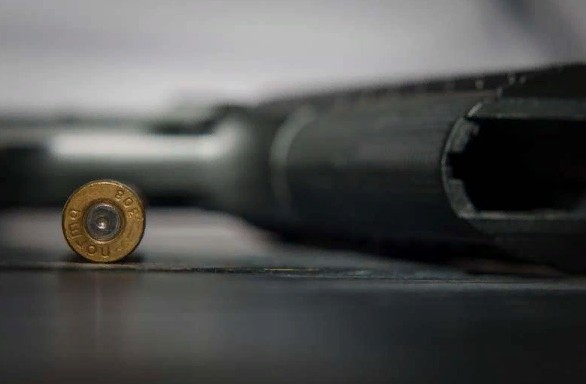Firearms have surpassed car accidents as the leading cause of early trauma deaths in the United States.
According to a study published online in the journal Trauma Surgery & Acute Care Open, firearms have surpassed vehicle crashes as the leading cause of premature mortality due to trauma in the United States since 2017.
In 2018, men accounted for more than 85% of all premature firearm deaths, with elderly white men committing the most suicides and young black men committing the most homicides.
Traumatic injuries are still the biggest cause of death in the United States for those under the age of 46, with car accidents being the major cause of death.
However, firearm deaths have been steadily rising over the last decade, and the researchers sought to see if they had surpassed trauma as the top cause of premature death.
They looked at data from annual National Vital Statistics Reports (NVSR) from 2009 to 2018, the most recent year for which data was available, as well as death certificates from each US state.
These annual reports were used to create a database of firearm-related deaths, and potential years of life lost were computed by subtracting the age at death from the benchmark age of 80.
These deaths were further broken down by age, gender, injury intent, and geographic location (North, South, Midwest, and West), and then compared to those caused by car accidents.
The overall 10-year cumulative years of potential life lost due to car crashes and weapons were 12.9 million and 12.6 million, respectively, throughout the study period.
In 2017, however, firearm deaths eclipsed vehicle crashes as the largest cause of traumatic death, with 1.44 million years of potential life lost vs 1.37 million.
This trend persisted in 2018, with weapons claiming 83,037 more potential years of life than car accidents.
Every year between 2009 and 2018, the annual percentage change in firearm deaths climbed by 0.72, whereas the annual percentage change in vehicle collision deaths decreased by 0.07.
The number of firearm suicides increased throughout the course of the 10-year research period, according to an analysis of injury intent.
They were responsible for 18,735 trauma deaths in 2009, which increased to 24,432 in 2018, as well as a corresponding increase in potential years of life lost, which increased from 571,720 in 2009 to 741,869 in 2018.
In addition, firearm homicides climbed from 11,493 in 2009 to 13,958 in 2018, equating to 633,656 years of potential life lost in 2018, up from 554,260 in 2009.
With 333 deaths in 2009 and 539 in 2018, the number of firearm deaths inflicted by police or other law enforcement personnel in the course of duty has remained relatively stable.
Men were responsible for the majority of the 38,929 firearm deaths in 2018, accounting for 33,258 (85%).
According to a split by race, white men committed the most firearm suicides in 2018, accounting for over half (49%) of all firearm deaths, with those over 45 being 46 percent higher than those under 45. Black men had the greatest rate of firearm homicides, accounting for 18% of all firearm deaths.
Over a ten-year period, white men lost a total of 4.95 million potential life years as a result of firearm suicide, accounting for more than a third of all firearm deaths and more than twice the amount attributable to firearm homicide: 1.7 million.
Homicide claimed the greatest potential life years for black men, totaling 3.2 million, compared to 0.4 million for firearm suicide. The majority of gun-related homicides occurred among people aged 15 to 24.
While the total number of possible years of life lost due to firearm murder among black men was lower than the total number of potential years of life lost due to firearm suicide among white men, the younger the age at which black men died, the higher the sum for each death.
On average, black males lost 50.5 years of potential life due to firearm homicides, compared to little over 29 years for white men due to firearm suicide.
During the study period, white women lost 1.3 million potential years of life due to firearm deaths, with over half of those being suicides.
Over a ten-year period, female suicides by firearm increased by 31.5 percent, while homicides grew by little under 10%. Black women lost more years of potential life as a result of firearm homicide than as a result of firearm suicide.
The South, followed by the Midwest and the West, had the highest cumulative sum of potential years of life lost due to weapons (5.7 million). The overall number of years lost in the Northeast was the smallest: 35,789 years.
According to official data, there were over 3 million registered firearms in the South in 2018, with Texas and Florida having the greatest number of registrations in the country.
The researchers recognize that the current average life expectancy in the United States is 78.7 years, not the 80 years they calculated.
Nonetheless, they point out that there is a significant trend in premature trauma mortality linked to firearms. There are 393.3 million firearms in the United States alone, compared to 16.8 million in Mexico and 12.7 million in Canada.
“Suicide is responsible for the greatest [years of potential life lost] owing to firearm deaths, and it is increasing at an alarming rate in the United States,” they conclude. Older white males who die by suicide and younger black males who die by homicide are the two most common categories affected by firearm deaths.
“More resources should be redirected and allocated to these at-risk populations in order to reduce the number of deaths and years of life lost from this potentially preventable cause of death.”





